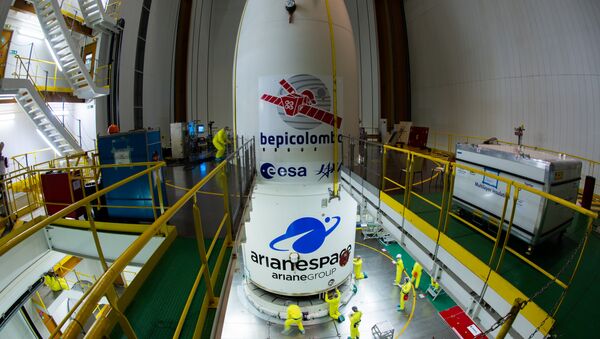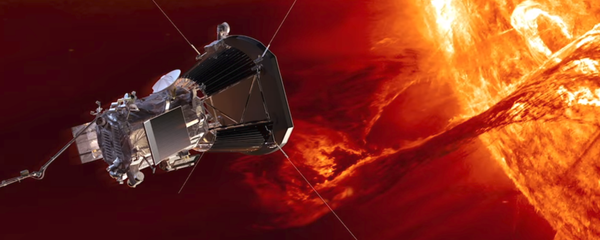It will send two probes to explore the hot planet, where surface temperatures can reach 450 degrees Celsius (842 degrees Fahrenheit).
Radio Sputnik has talked with Dr. Johannes Benkhoff, BepiColombo project scientist and a planetary physicist at ESA in Noordwijk, the Netherlands, who has worked on BepiColombo for nearly 15 years.
Sputnik: How significant is this first mission to Mercury?
Dr. Johannes Benkhoff: It's very important and significant for ESA, because it is the first mission into the inner solar system, to Mercury; and Mercury is the planet closest to the Sun and this planet is a planet of mystery. So, we have a lot of open questions, which we don't know about Mercury, which we would like to find out. In addition, it is a very harsh environment for this planet and of course for our spacecraft so close to the Sun.
READ MORE: BepiColombo Space Mission Set to Blast Off to Hot and Mysterious Mercury
Dr. Johannes Benkhoff: First of all, there is a global question that we always ask: how do we come from? how our solar system is formed? Here Mercury plays a crucial role, because it's a planet very close to the Sun and for that reason understanding Mercury is important to answer this question and to give us some light on which of the formation theories is the correct one. In addition, there are aspects like the magnetic field, which we would like to discover more, because Mercury has some Earth-like magnetic fields. So we hope that by learning something about how this magnetic field interacts with the Sun, we can learn something for our magnetic field. Then, we found water, ice and some permanently shadowed craters on the surface of Mercury, which we would like to follow up much water and ice is there and what kind of water and is it mixed with something else? These are a few of the many questions we have in order to explore this planet.
Radio Sputnik: Can you also tell us about some of the primary difficulties or challenges that you had to face in preparing for this mission? What are the specifics of traveling to Mercury?
It will take us 7 years to reach this planet. We have to go 18 times around the Sun and then when you are at Mercury, then you need to protect your spacecraft against the heat and for that, we developed special insulation foil, which we wrapped our spacecraft into. The paints we were using for the high-gain antenna were specially developed for BepiColombo and many, many more things, almost 80 percent of all the materials we are using on the spacecraft are either qualified, or newly developed for that mission.
Sputnik: Very exciting. So, the reason that other missions haven't been successful, or there haven't been other missions to the planet in the past are having to do with these difficulties, perhaps the temperatures and the power supplies that you had to resolve?
Sputnik: The probe is gonna be approaching Mercury or getting close to Mercury in 2025. When will we actually see some of the first results of the data that is collecting, arriving back to Earth? Perhaps, there are certain things that you'll be getting information on as the probe travels to Mercury and makes these 8 trips around the Sun to deaccelerate?
Dr. Johannes Benkhoff: Yes, when we arrive in 2025, first of all, we need to get rid of our transfer module, because it's too heavy and we don't want to take it into an orbit around Mercury. So, we jettison this module and then we bring our two orbiters to the dedicated position. For that, we need additional 15 burns with our engines to place the spacecraft in the direct position. That will take another two months.
So, early 2026 we will see the first images from the surface of mercury made by our spacecraft. En route to the spacecraft we are also able to map some of these planets we are flying by, but, unfortunately, most of our instruments doing cruise look at the transfer module. That was a clever trick by our engineers, because you can avoid complicated shutter mechanisms, or covers, but unfortunately, we cannot use them during the cruise and that goes mainly for all the instruments that are looking directly at the planet.
The views and opinions expressed by Dr. Johannes Benkhoff are those of the expert and do not necessarily reflect those of Sputnik.






